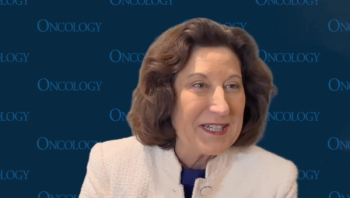
- Oncology Vol 29 No 4_Suppl_1
- Volume 29
- Issue 4_Suppl_1
(P077) Defining the Pendulum Swing From Whole-Pelvic Radiation Therapy (WPRT) Alone to Vaginal Brachytherapy (VB) in the Adjuvant Setting for Endometrial Cancer: A SEER-Based Analysis From Years 2000–2011
This SEER study demonstrates the pronounced increase in the utilization of VB over WPRT alone in the adjuvant setting for endometrial cancer. This observation may spark critical evaluation of US practice patterns seen from 2000 to 2011 and its potential impact on cost, new policies, and the patient’s quality of life.
Sagar C. Patel, MD, Sudershan Bhatia, MD, PhD, William Rockey, MD, PhD, Mindi Tennapel, BSMS, MBA, Wenqing Sun, MD, PhD; University of Iowa Hospitals and Clinics
PURPOSE: To examine the change in the utilization trends of radiation therapy in the adjuvant setting for endometrial cancer in a Surveillance, Epidemiology, and End Results (SEER) analysis from 2000–2011.
PATIENTS AND METHODS: We analyzed the change in utilization of whole-pelvic radiation therapy (WPRT) alone, vaginal brachytherapy (VB) alone, and WPRT + VB in all patients with endometrial cancer in the adjuvant setting, stratified by age, race, marital status, specific US registry, histology, and grade. In addition, a subset analysis of endometrial cancer patients with localized-stage uterine disease, endometrioid histology, and varying age and grade was completed to model intermediate- and high-risk groups. Percentage change (PC) and annual percentage change (APC) in treatment utilization were calculated for each radiation therapy modality. APC characterizes utilization trends over time and is comparable across scales in SEER*Stat. Utilization rates were analyzed by using SEER*Stat with a log-linear regression model.
RESULTS: In the years 2000–2011, there was a 220.1% (PC) and 11.7% (APC) increase in the utilization of VB, while there was a 33.1% (PC) and 4.1% (APC) decrease in the utilization of WPRT alone (P < .05). For each demographic and clinical variable, the most pronounced increase in the utilization of VB over WPRT alone was in individuals aged ≥ 70 years (248.4% [PC] and 12.2% [APC]), in those of Asian race (584% [PC] and 13.4% [APC]), in the SEER registry Louisiana (1,216.5% [PC] and 12.5% [APC]), in grade 3 tumors (303.3% [PC] and 12.9% [APC]), and in those with carcinosarcoma histology (1,251.5% [PC] and 32.3% [APC]). On the contrary, the most pronounced decrease in the utilization of WPRT alone was in individuals aged ≥ 70 years (41.4% [PC] and 5.2% [APC]), in those of white race (37.1% [PC] and 4.4% [APC]), in the SEER registry Louisiana (60.1% [PC] and 7.0% [APC]), in grade 2 tumors (52.2% [PC] and 6.8% [APC]), and in those with carcinosarcoma histology (56.8% [PC] and 3.3% [APC]).
CONCLUSION: This SEER study demonstrates the pronounced increase in the utilization of VB over WPRT alone in the adjuvant setting for endometrial cancer. This observation may spark critical evaluation of US practice patterns seen from 2000 to 2011 and its potential impact on cost, new policies, and the patient’s quality of life.
Proceedings of the 97th Annual Meeting of the American Radium Society-
Articles in this issue
Newsletter
Stay up to date on recent advances in the multidisciplinary approach to cancer.

















































































